The Nest
Beaty Museum
Maple Tree Square

School of Architecture and Landscape Architecture (SALA), University of British Columbia
Cube and section sketches of Beatty Biodiversity Museum & Centre
West 41st and East Boulevard
Layers on layers
Buses heading east and west during their busiest times
Vehicles vs cyclists at 7am
It gets loud on West 41st… all day long
Street trees everywhere, many not looking so happy
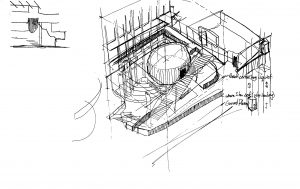
In assignment 4 I explored the Nest on UBC Campus. I first walked up and down through the levels to get a sense of how each level interacted with the suspended lecture hall. I then drew which levels that the lecture hall intersected with via a section drawing to help aid me with my larger drawing using the “expand-the-box” method

Up on the roof of the nest I mapped sunlight, reflections, and skylines. I tried to reduce the sunlight pattern, as well as the panoramic view, down to simple lines and blocks. The sunlight shined through the arcade to make a checkered effect on the floor. The panoramic view had countless spires which were broken up by large buildings in the distance.
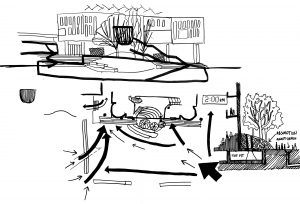
Down on the ground in front of the nest I mapped the flow of people. Larger arrows indicate larger swarms of students. I then mapped how the basement level of the nest connected to the life building. Finally I created a cross section through the tree covered hill that the nest intersects, giving special attention to how the root systems interacted with The Pit Bar underneath it.
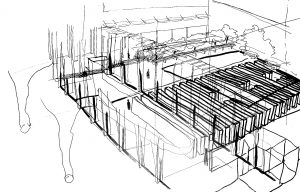
Through my drawing of the Beady Museum I wanted to reveal the massing of its underground archive in relation to the surrounding complex. In doing so I am hoping the weight/ density of the archive is apparent.
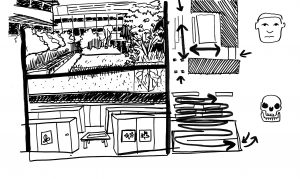
To further my analysis, I did a section sketch through the field and down into the archive. I wanted to map the relationship between the living and the dead at the site. Above ground are many living things, which is in contrast to the many archived dead things beneath.
I also did a sketch showing how movement through either space is different. Above ground, movements are in opposition to each other in almost perfect intersections, while underground movement is more fluid and variable.
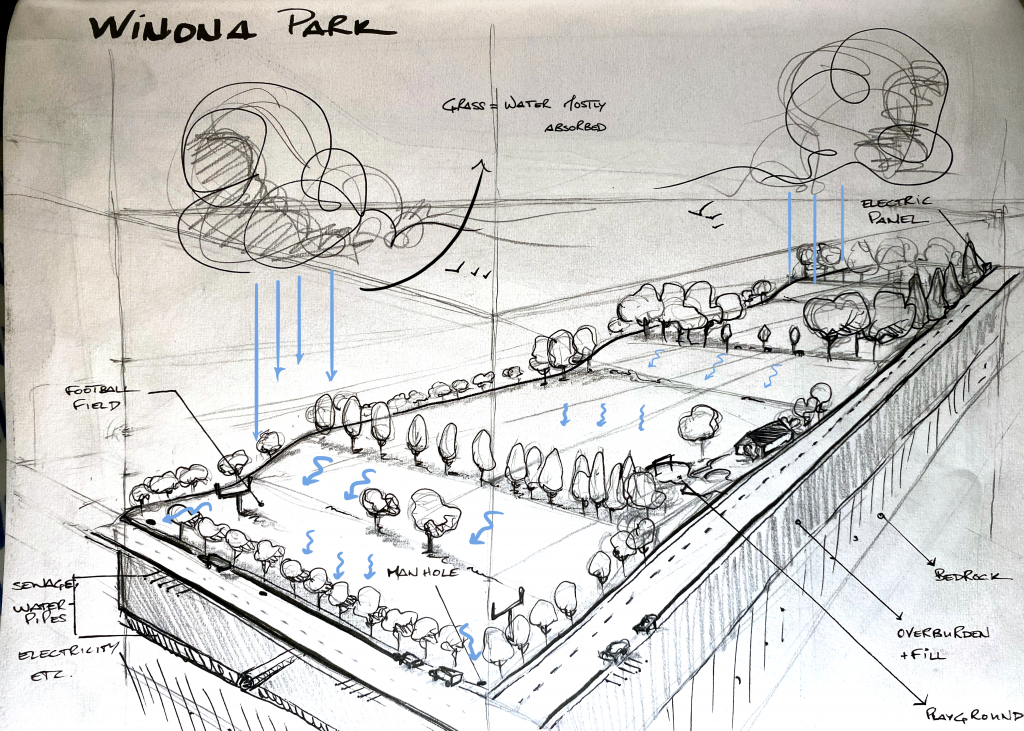
This image shows the cube method applied to Winona Park in Marpole, BC.
For this assignment, I have decided to map my own steps, at 3 different physical and temporal scales.
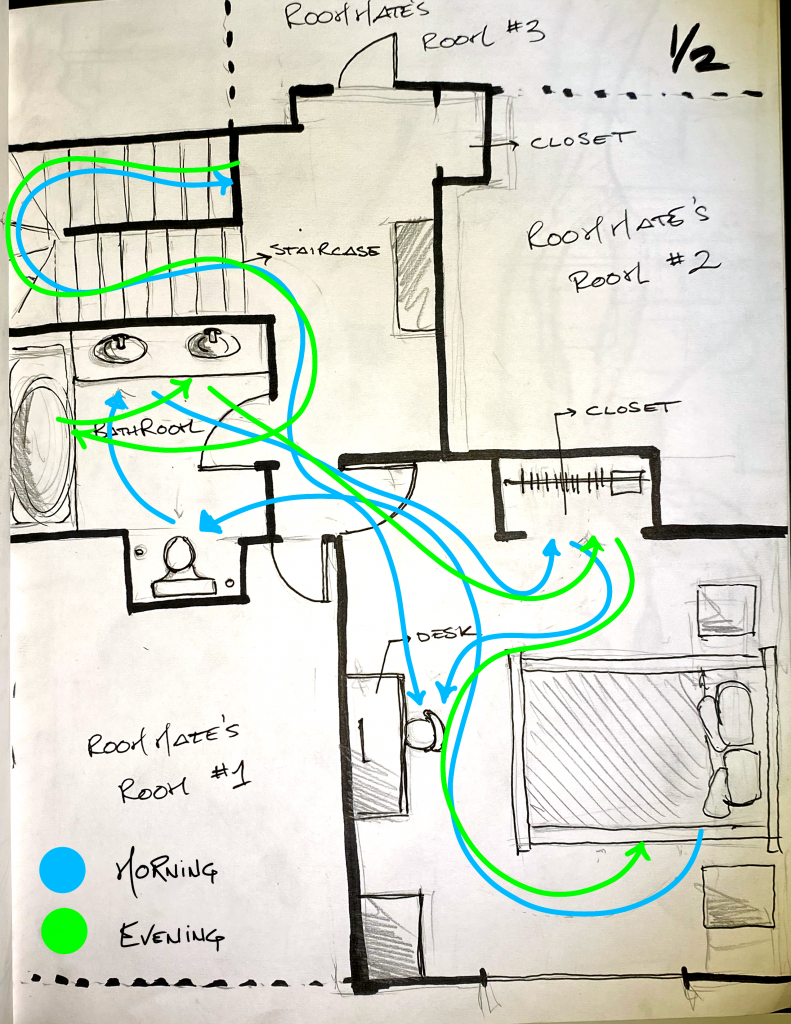
Drawn above are my movements on Tuesday, October 4th, 2022.
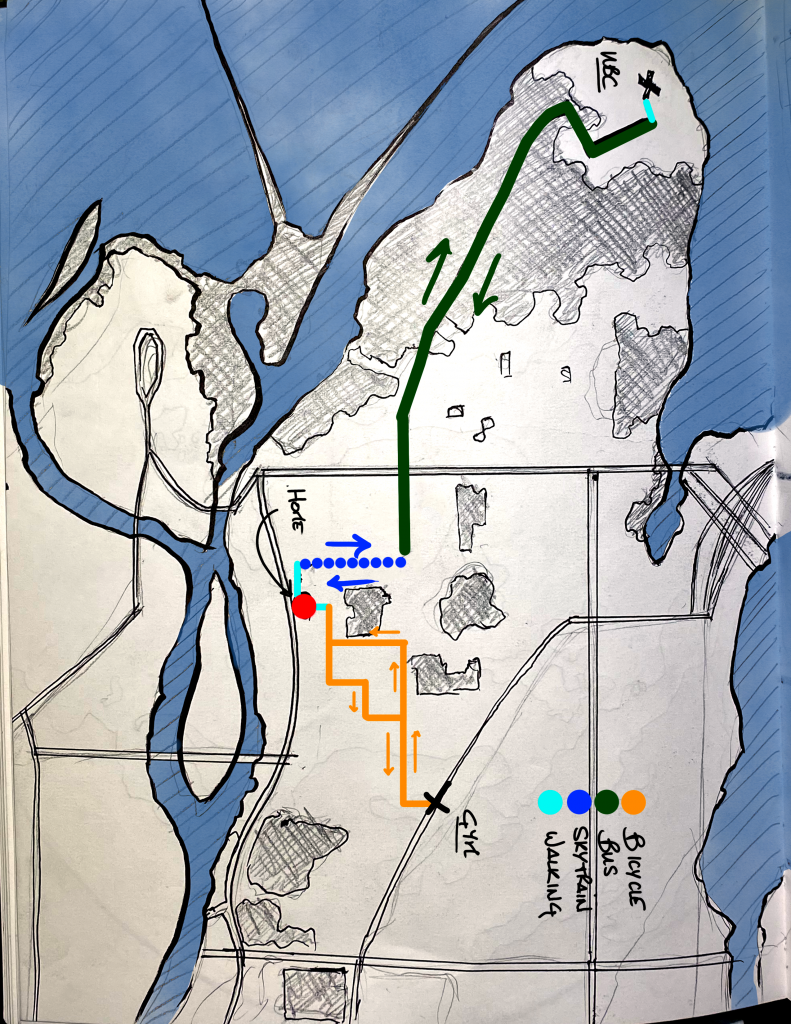
Drawn above are my movements taken on the same day (October 4th, 2022), but this time at a bigger scale: this map shows my usual day-to-day travel from my apartment to UBC and to the gym.

Finally, the map above displays my movements on a much larger scale, taken over 6 months, from January to September 2022. I have traveled with my family to Austria last summer and made 2 round trips to Vancouver.


